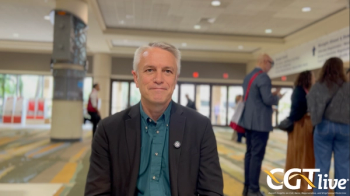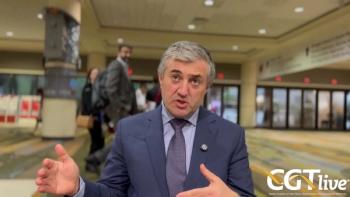
Long-Term Axi-Cel Data Shows Durable Outcomes, Elucidates Drivers of Nonrelapse Mortality
Elderly patients were at higher risk of infections and subsequent malignant neoplasms.
New, long-term research on outcomes with axicabtagene ciloleucel (axi-cel)
“Our research shows that axi-cel can provide durable, long-lasting responses in a substantial portion of patients with relapsed or refractory large B-cell lymphoma,” lead study author Michael Jain, MD, PhD, associate member, Blood and Marrow Transplant and Cellular Immunotherapy Department, Moffitt Cancer Center, said in a statement.2 “This is noteworthy given the limited options available for these patients previously.”
The retrospective analysis, published in Journal of Clinical Oncology, was led by Moffitt Cancer Center and included data from a consortium of 16 other US academic cancer centers. The analysis reported on 298 patients who were leukapheresed with the intent to receive standard-of-care axi-cel (n = 275 infused) after 2 or more previous lines of therapy, with extended follow-up data to a mean of 58 months.1
Jain and colleagues found that axi-cel yielded outcomes in the standard-of-care setting consistent with those reported in clinical trials up to 5 years. Progression-free survival at 5 years was 29% and overall survival (OS) at 5 years was 40%. The 5-year lymphoma-specific survival was 53% with infrequent late relapses.1
READ MORE:
“While axi-cel is a powerful therapy, our findings underscore the need for ongoing monitoring and supportive care, particularly for older patients,” Jain added.2 “Infections and secondary cancers are significant challenges that must be addressed to improve overall patient outcomes.”
However, investigators found that late infections and the development of subsequent malignant neoplasms (SMNs) reduced survival, with a 5-year nonrelapse mortality (NRM) rate of 16.2%. Late NRM was mainly due to infections and SMNs (n = 24; 9%). SNMs included therapy-related myeloid neoplasms (n = 15), solid tumors (n = 7), and unrelated lymphoid malignancies (n = 2). Over half of NRM events occurred beyond 2 years. Patients who were 60 years and older had a lower risk of relapse (P = .02), but a higher risk of NRM compared with patients younger than 60 years (NRM odds ratio, 4.5 [95% CI, 2.1 to 10.8]; P < .001).1
“This study highlights the importance of personalized follow-up care and proactive management of potential complications. Our goal is to enhance patients’ long-term quality of life receiving CAR T-cell therapies,” Jain added.2
The research aligns with a recent study published in Blood Advances
REFERENCES
1. Jain MD, Spiegel JY, Nastoupil LJ, et al. Five-Year Follow-Up of Standard-of-Care AxicabtageneCiloleucel for Large B-Cell Lymphoma: Results From the US Lymphoma CAR T Consortium. J Clin Oncol. Published online August 2, 2024. doi: 10.1200/JCO.23.02786
2. Moffitt Consortium Study Answers Questions About Long-Term Survivorship Following CAR T Treatment. News release. Moffitt Cancer Center. August 5, 2024. https://www.moffitt.org/newsroom/news-releases/moffitt-consortium-study-answers-questions-about-long-term-survivorship-following-car-t-treatment/
3. Ahmed N, Wesson W, Lutfi F, et al. Optimizing the Post-CAR T Monitoring Period for Axicabtagene Ciloleucel, Tisagenlecleucel, and Lisocabtagene Maraleucel. Blood Adv. Published online July 23, 2024. Doi: 10.1182/bloodadvances.2023012549
Newsletter
Stay at the forefront of cutting-edge science with CGT—your direct line to expert insights, breakthrough data, and real-time coverage of the latest advancements in cell and gene therapy.





































